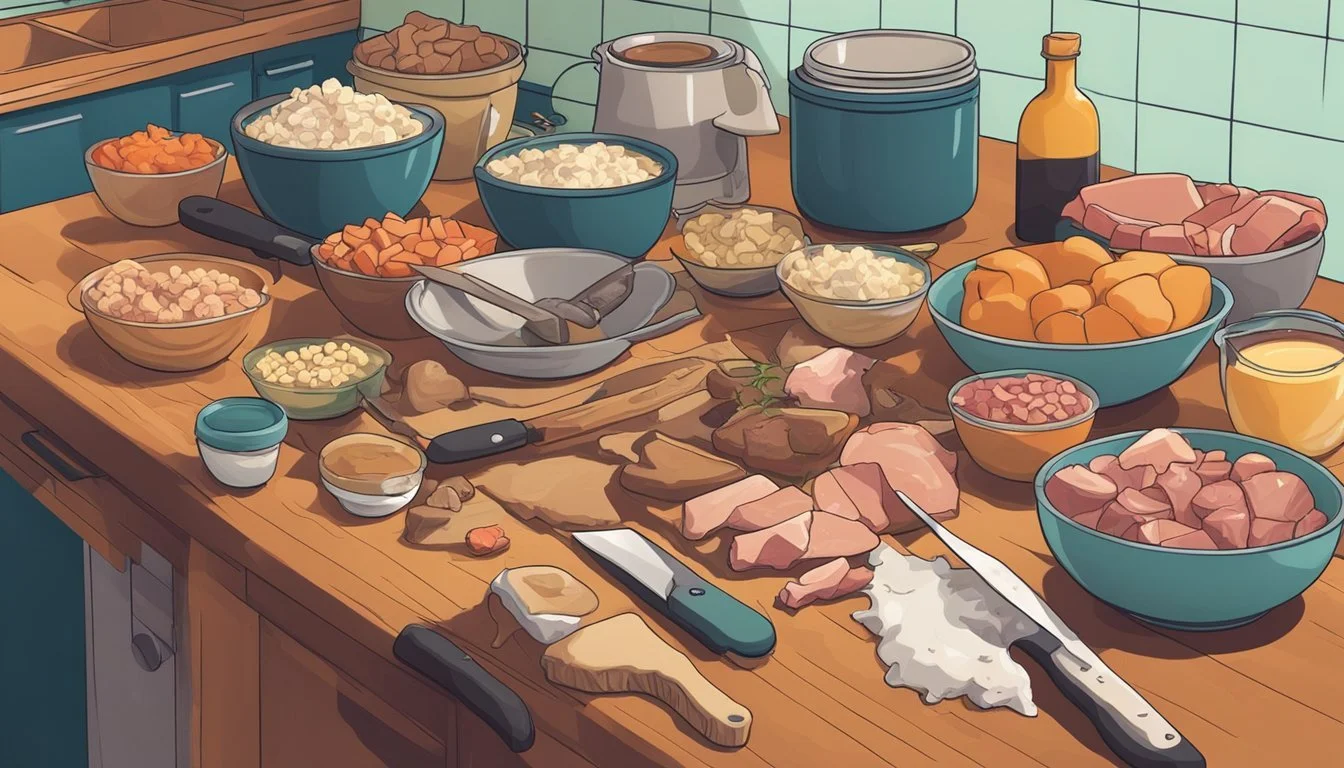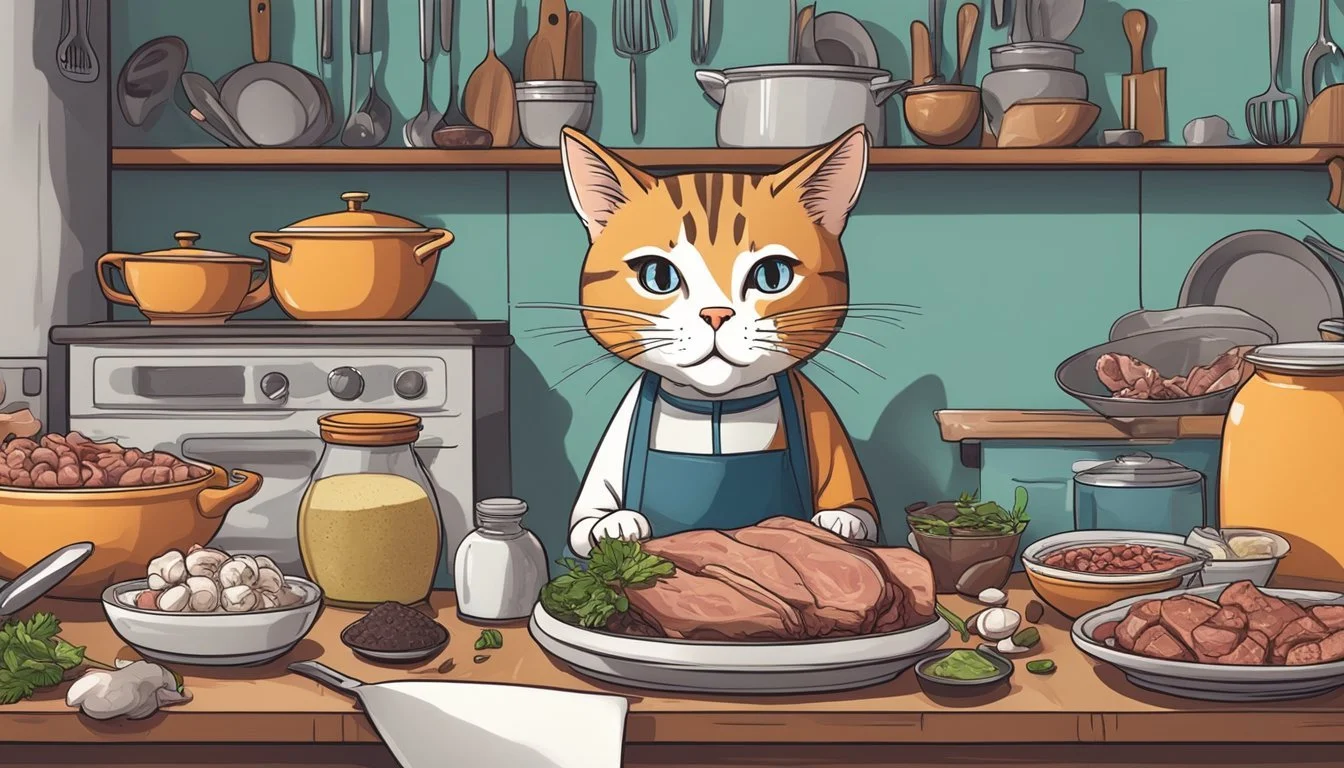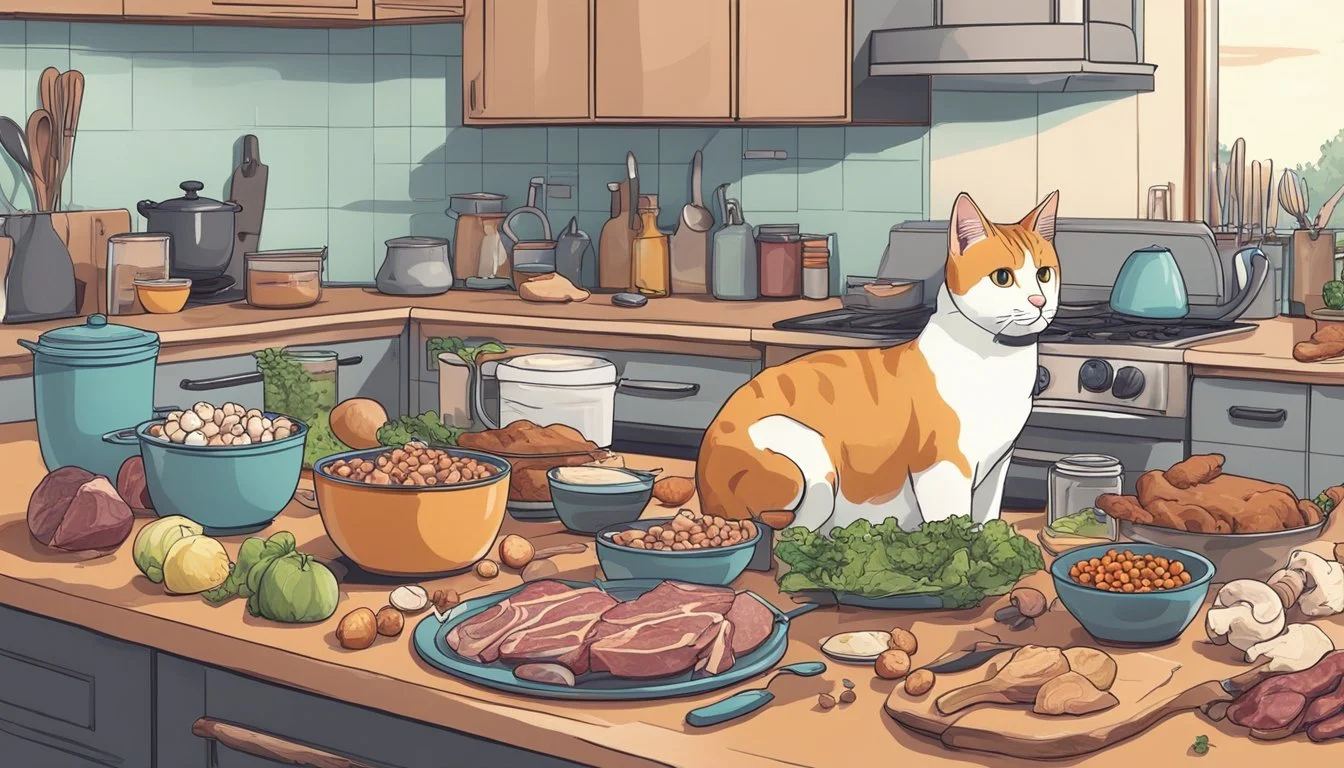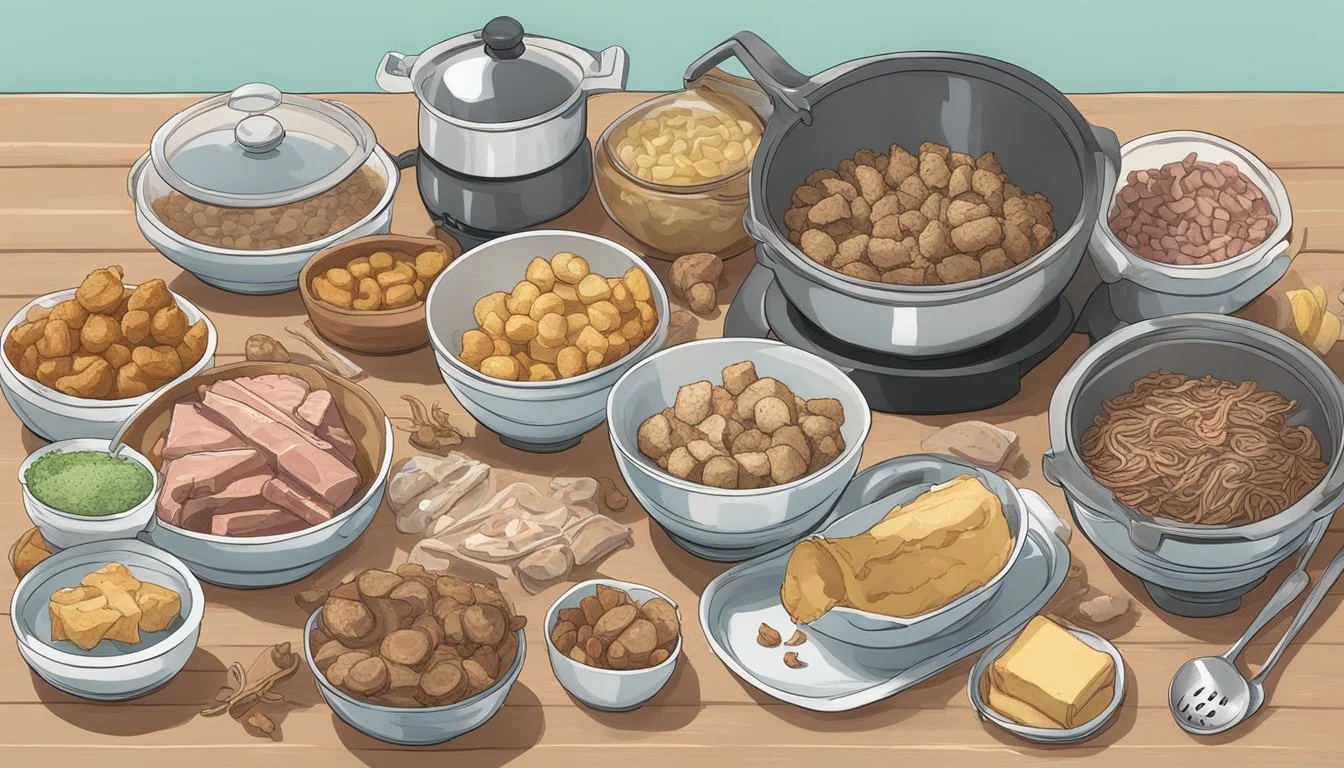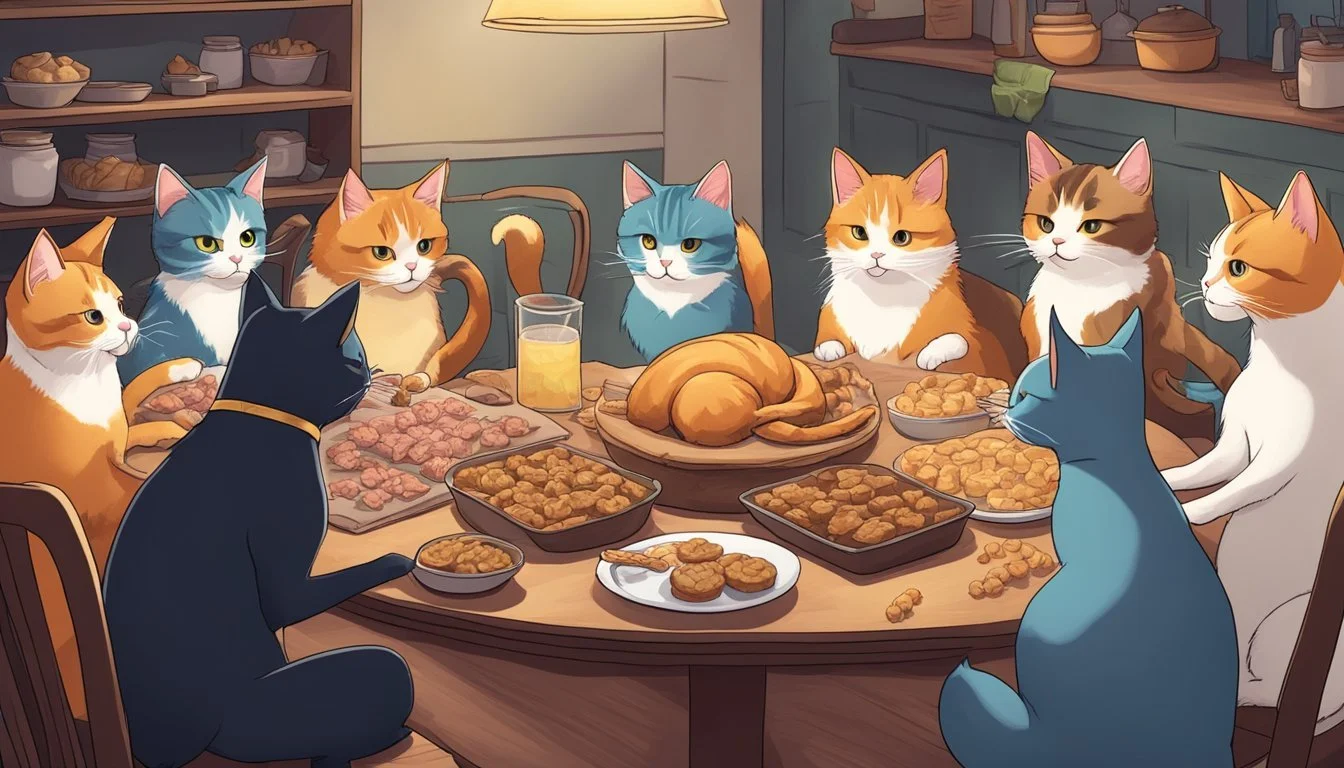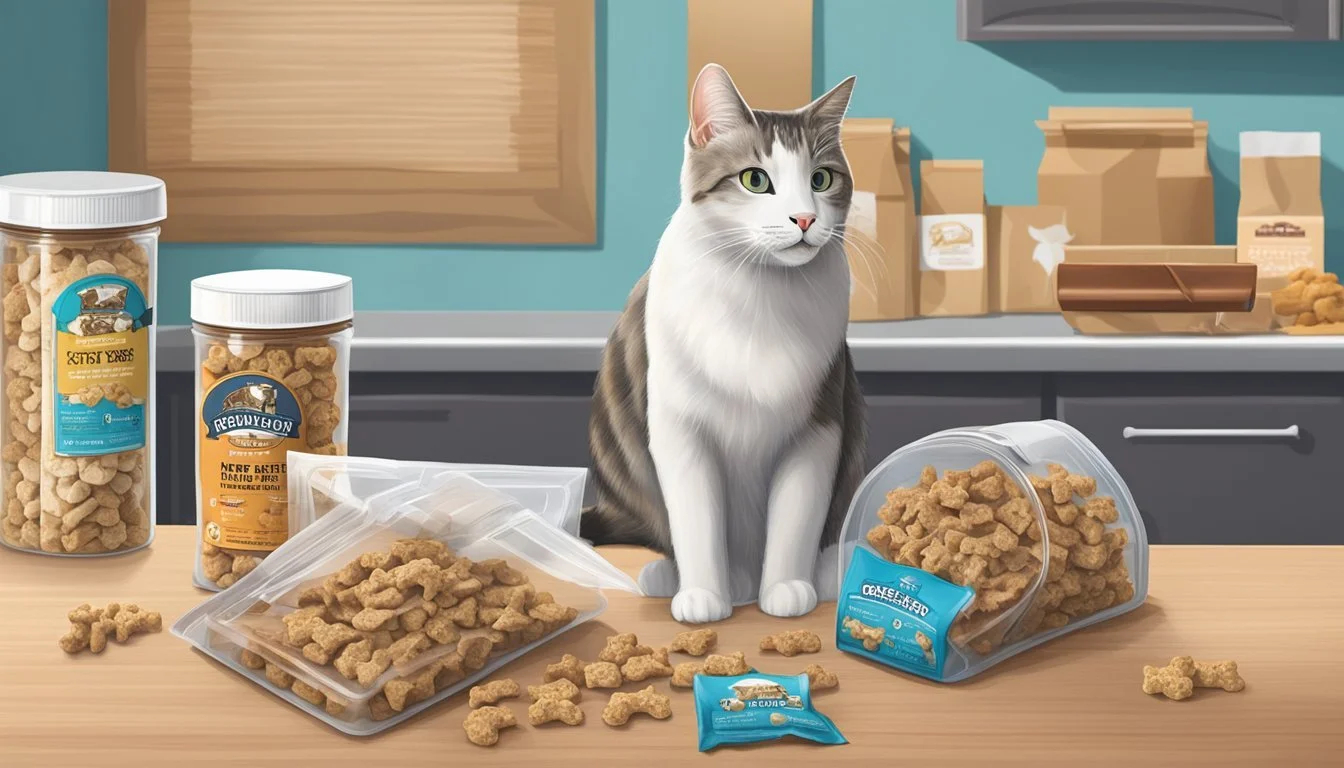Gourmet Cat Treats
Homemade Recipes to Spoil Your Feline with Leftover Meat and Bones
Creating gourmet cat treats at home is a satisfying way to indulge a feline's palate while utilizing kitchen leftovers that might otherwise go to waste. Considering the carnivorous nature of cats, leftover meats and bones from meals are ideal for crafting nutritious and appealing treats. This approach not only reduces food waste but also provides pet owners with a way to offer their cats a homemade alternative to store-bought snacks, which may contain additives or preservatives that some pet owners prefer to avoid.
Homemade cat treats, especially those made from leftover meat and bones, ensure that quality ingredients are used without unnecessary fillers. Bones, when prepared correctly, can add a rich flavor and provide a good source of minerals. However, it’s imperative to ensure that any bones used are safe for cats to chew on, as cooked bones can splinter and cause harm. Meat, on the other hand, is a great source of protein and can be easily baked or dehydrated to create a variety of textures and flavors.
With a focus on freshness and simplicity, these gourmet treats can be tailored to meet dietary restrictions or preferences, making them suitable for even the most discerning feline. The homemade aspect also leads to a deeper understanding of a cat's nutritional needs, fostering a bond between the pet and the owner through the act of care in preparation.
Understanding Feline Nutrition
Cats, both kittens and adults, are obligate carnivores, which indicates a stringent requirement for a diet primarily composed of meat. Their dietary needs are uniquely different from other pets due to their reliance on certain amino acids and vitamins that are found in animal tissues.
Essential Nutrients: Cats require a range of nutrients that include high-quality protein, taurine, arachidonic acid, vitamins A and D, and certain B vitamins. Unlike some animals, they cannot synthesize these nutrients in sufficient quantities and must obtain them from their diet.
Nutrient Breakdown for Cats:
Nutrient Importance Protein Vital for growth, maintenance, and repair. Amino Acids (Taurine) Critical for heart and eye health. Fatty Acids (Arachidonic Acid) Necessary for skin and coat health. Vitamin A Essential for vision and immune function. Vitamin D Helps in calcium absorption. B Vitamins Support metabolism and red blood cell production.
For kittens, their nutritional needs are even more demanding due to their rapid growth and development. They require higher amounts of protein and calories compared to adult cats to support this accelerated phase.
It is imperative that when preparing homemade treats from leftover meats and bones, one recognizes the balance required for a feline diet. Include muscle meat, organs, and bones – all of which can provide a variety of essential nutrients.
However, cat owners should proceed with caution when including bones in a cat's diet, ensuring they are adequately sized to prevent choking or digestive obstruction and are cooked properly to kill pathogens. Consultation with a veterinarian or a pet nutritionist is advisable when formulating homemade cat diets to avoid nutritional imbalances.
Why Homemade Cat Treats?
Creating treats for cats at home allows pet owners to provide their feline companions with snacks that are both nourishing and appealing. These homemade delicacies can be more cost-effective and often healthier than store-bought options.
Cost-Effective and Customizable
Homemade cat treats can be remarkably cost-effective, especially when utilizing leftover meat and bones which might otherwise go to waste. A distinct advantage is the ability to customize treats to a cat's specific dietary needs or taste preferences. Owners can create small batches of various flavors and ingredients to determine what their cat prefers, ensuring minimal waste.
Cost: Significant savings over time compared to commercial treats
Customization: Tailored to the cat's preferences and dietary needs
Avoiding Additives and Preservatives
Many commercial cat treats contain additives and preservatives that some owners prefer to avoid. DIY cat treats eliminate the uncertainty about what's in a cat's snack. Pet owners have complete control over the ingredients, ensuring their cats consume treats free from unnecessary chemicals.
Control: Knowing exactly what goes into the cat's treats
Health: Potentially better for the cat's well-being due to the absence of additives
Preparation Basics
When creating homemade cat treats with leftover meat and bones, one must focus on selecting quality ingredients, maintaining kitchen hygiene and safety, and applying the right cooking techniques to ensure preservation.
Selecting Quality Ingredients
One should always opt for fresh, lean meats such as chicken or turkey thighs, and discard any that exhibit a disagreeable odor or discoloration. Cooking with bones requires ensuring they are from cuts commonly considered safe for cats, such as uncooked chicken necks. Any additives, like dry supplements or fish oil, must be feline-appropriate and measured with precision.
Hygiene and Kitchen Safety
Maintaining a sterile environment is critical:
Always wash hands thoroughly before and after handling raw meat.
Sanitize all surfaces and utensils with safe disinfectants.
Prevent cross-contamination by using separate chopping boards for meats and other ingredients.
Cooking Techniques and Preservation
Proper cooking and storage are essential:
Preheat the oven to the appropriate temperature, usually around 350°F.
Employ techniques that preserve nutrients, such as baking meat until halfway cooked to retain moisture.
Post-cooking, treats should be cooled and stored in an airtight container to extend freshness and prevent spoilage.
Meat-Based Treat Recipes
In this section, we'll cover a variety of meat-based treats utilizing leftover turkey, chicken, and beef. These homemade recipes offer delightful ways to use up excess meat while providing your feline with nourishing snacks.
Leftover Turkey Delights
For cats that enjoy poultry, Leftover Turkey Delights are a perfect choice. Take 1 cup of finely chopped cooked turkey and mix it with one egg, 1 tablespoon of olive oil, and 2 tablespoons of cat-friendly flour or oat flour. Form small, pea-sized balls and bake them on a lined tray at 350°F for about 15 minutes or until they are firm and lightly browned.
Savory Chicken Bites
Savory Chicken Bites are a nutritious option for kitty treats. Combine 1 cup of diced cooked chicken, 1/4 cup of mashed carrots, and a teaspoon of finely chopped catnip for an irresistible flavor. Integrate the ingredients together and press the mixture into small cookie cutter shapes. Bake at 375°F on a parchment-lined baking sheet until crisp.
Beefy Morsels
Not to be outdone, Beefy Morsels take advantage of leftover beef's rich taste. Shred or grind 1 cup of cooked beef and blend it with an egg, 1 teaspoon of fresh parsley, and enough beef broth to create a thick paste. Spread the mixture thinly on a baking sheet and cook at 350°F until dry. Break into small treat-size pieces for your cat to enjoy.
Fish-Based Treat Delicacies
Fish-based treats offer a bounty of flavors and nutritional benefits that felines find irresistible. Packed with protein and omega-3s, these gourmet treats can be made right in your kitchen using simple ingredients like salmon, canned tuna (What wine goes well with tuna?), and sardines.
Salmon Nibbles
Ingredients:
1 cup of cooked salmon, flaked
1 egg
1 tablespoon of catnip (optional)
1 1/4 cup whole wheat flour
Instructions:
Preheat the oven to 350°F (175°C).
Combine flaked salmon, egg, and catnip in a mixing bowl.
Gradually mix in flour until a dough forms.
Roll out the dough and cut into bite-sized pieces.
Bake for 20 minutes or until edges are golden brown.
Tuna Crackers
Ingredients:
1 can of unsalted canned tuna in water, drained
1 cup of whole wheat flour
1 egg
1 tablespoon of water (if necessary)
Instructions:
Preheat the oven to 350°F (175°C) and line a baking sheet with parchment paper.
Blend tuna, egg, and water in a food processor until smooth.
Transfer to a bowl and slowly add flour, forming a dough.
Flatten the dough and cut into small cracker shapes.
Bake for 10-12 minutes or until crackers are crisp.
Sardine Snacks
Ingredients:
1 can of sardines in water, drained
1/4 cup of whole wheat flour
1/4 cup of cooked, pureed pumpkin (optional for added fiber)
Instructions:
Preheat your oven to 350°F (175°C).
Mash the sardines until smooth and then combine with pumpkin.
Gradually add flour, working into a dough.
Create small, treat-sized balls and flatten slightly.
Bake for about 15 minutes or until firm and slightly browned.
These homemade fish-based treats are not only delicious but also provide a variety of health benefits for cats, incorporating essential proteins and fatty acids that are crucial for a cat's healthy diet.
Vegetable and Grain Inclusions
In creating gourmet cat treats at home, the inclusion of vegetables like pumpkin and grains such as wheat and oatmeal can add nutritional value and variety to a pet’s diet. These ingredients are not just fillers but serve to enhance the health quotient of homemade treats.
Pumpkin Puree Treats
Pumpkin is a superb source of fiber and can aid in digestive regularity for cats. Treats using pumpkin puree should be simple, focusing on the natural sweetness and nutritional benefits of pumpkin.
Ingredients:
1/2 cup canned pumpkin puree (not pie filling)
1 cup whole wheat flour
1/4 cup water or broth (for binding)
Instructions:
Preheat oven to 350°F (175°C).
Mix pumpkin puree and flour, then gradually add water until dough forms.
Roll out the dough and cut into shapes.
Bake for 20-25 minutes or until crisp.
Oatmeal and Wheat Crunchies
Utilizing oatmeal in cat treats is an excellent choice for households looking for gluten-free options, whereas whole wheat flour can be a healthy inclusion for additional fiber and nutrients.
Ingredients:
1 cup oatmeal or coconut flour
1/2 cup whole wheat flour
1/4 cup meat broth or water
Instructions:
Preheat the oven to 350°F (175°C).
Combine oatmeal and whole wheat flour, then slowly mix in broth.
Knead into a dough, roll out, and cut into treat shapes.
Bake for 20-30 minutes until treats are hardened.
Both recipes should be allowed to cool completely before offering them to your cat. These treats provide a wholesome alternative to store-bought options, ensuring pets receive a balanced combination of meat and plant-based nutrients.
Specialty Treat Recipes
The following recipes provide pet owners with a method to use leftover meats and bones to create palatable delights for their feline friends. Each recipe ensures to cater to cats’ nutritional needs and taste preferences.
Cheesy Cat Treats
A combination of cheese and meat not only makes these treats irresistible but also adds valuable calcium to a cat's diet. Cheesy Cat Treats involve:
1 cup of shredded cheddar or parmesan cheese
½ cup of cooked, finely chopped chicken or turkey
1 tablespoon of plain yogurt or sour cream
1 cup of wheat flour or a wheat-free alternative for sensitive cats
Firstly, mix the cheese and yogurt, then gradually blend in flour and meat. Shape into small treats and bake until golden brown.
Cranberry Cat Delights
Cats can benefit from the antioxidants in cranberries, and Cranberry Cat Delights offer a festive way to include them. The recipe includes:
½ cup of dried cranberries, finely chopped
½ cup of cooked meat leftovers, such as turkey or chicken
1 egg, beaten
1 cup of whole wheat or substitute flour
Combine all ingredients and form into small, bite-size pieces. Bake until crisp, and allow them to cool before serving.
Spinach and Chicken Cat Cookies
Spinach provides vitamins and chicken supplies protein in the Spinach and Chicken Cat Cookies recipe. Key ingredients are:
1 cup of finely chopped cooked chicken
½ cup of pureed spinach
1 tablespoon of carrot baby food
2 cups of rice flour
Blend chicken, spinach, and carrot baby food together, adding rice flour to form a stiff dough. Roll out, cut into shapes, and bake. Ensure treats are cool before serving to the cat.
Sweet Treats and Occasional Delights
Cats are known for their carnivorous nature, but they can enjoy the occasional sweet treat suited to their dietary needs. These treats should be given in moderation to complement a balanced diet.
Banana Kitty Bites
Bananas are a safe and healthy treat for cats in small amounts. They are rich in potassium and soluble fiber. A recipe for Banana Kitty Bites might include a mash of ripe banana mixed with a protein like finely shredded cooked chicken. The mixture can then be formed into small, pea-sized treats and baked at 350°F for about 15 minutes or until slightly hardened. Always let the treats cool before offering them to your cat.
Cats and Dairy: A Cautionary Note
Contrary to popular belief, dairy is not ideal for cats, as many are lactose intolerant and can experience digestive distress from milk or cheese. If a cat parent wishes to use dairy, it should only be in very limited quantities and preferably in the form of lactose-free products. Yoghurt and hard cheeses in tiny amounts may be better tolerated due to their lower lactose content. However, the primary treat composition should rely on safer, lactose-free ingredients to ensure the cat's health and enjoyment.
Creative Presentation and Serving Ideas
When crafting gourmet cat treats at home, presentation is just as important as the recipe. Delightful shapes and appropriate serving sizes can transform leftovers into a culinary event for feline friends.
Fun Shapes with Cookie Cutters
Using cookie cutters, one can shape homemade cat treats into fun designs. From simple circles and hearts to cat silhouettes and fish, these tools make it easy to create visually appealing treats out of meat or bone-based dough. One tip is to choose cookie cutters in various sizes to cater to the treat's consistency and the size of the cat.
Example Shapes:
Fish
Mouse
Paw prints
Bones
Serving Size and Frequency
Serving size and frequency are critical to maintain a cat's healthy diet, especially with treats. It's recommended that treats should only make up about 10% of a cat's daily caloric intake. A guideline for the ideal serving is:
Small cats: a pea-sized treat, 2 or 3 times a day.
Large cats: a treat up to double that size, equally spaced throughout the day.
Frequency should be limited to prevent overfeeding, and treats should complement, not replace, balanced meals. For cats with special dietary needs, consult a veterinarian for serving recommendations.
Storage and Shelf Life
Proper storage is key to ensuring homemade gourmet cat treats maintain their freshness and nutritional value. The shelf life largely depends on the method of storage and the ingredients used in the treats.
Freezing and Thawing
Freezing is an excellent way to extend the shelf life of homemade cat treats made with leftover meat and bones. To save space and keep treats easily accessible, one can freeze them in single layers on a baking sheet before transferring them to a freezing bag or container. Ensure to label the container with the freeze date, as these treats can usually be stored safely for up to three months.
When it's time to serve, thawing treats should be done gradually, preferably in the refrigerator overnight. Avoid microwaving chewy cat treats or those containing broth, as this may lead to uneven heating and potential spoilage.
Storing in Airtight Containers
For short-term storage, airtight containers are the homeowner's friend. These containers can keep treats fresh for several days to a week when stored in a cool, dry place. Chewy cat treats tend to hold moisture, so ensuring they're completely cooled before storage is crucial to preventing mold.
For treats made with broth or more perishable ingredients, refrigeration in airtight containers is essential to prevent spoilage. When refrigerated, one can expect these treats to last up to one week. Always inspect the treats before serving to ensure they haven’t dried out or developed mold.
Understanding Cats' Reactions to Treats
When offering cats treats, observing how they respond can provide valuable insights into their preferences and health. Treats can be an excellent method for reinforcement but also a window to watch for any adverse reactions.
Positive Reinforcement and Training
Cats often display a positive reaction to gourmet treats, making them excellent aids for positive reinforcement in training. Treats can motivate cats and reinforce desired behaviors. A kitten might be encouraged to use a scratching post instead of furniture if rewarded with a treat. Training sessions should be short for kittens to keep them engaged.
Training Tips:
Consistency: Use the same command with the treat reward.
Timing: Rewards should be given immediately after the desired behavior.
Portion Control: Treats should be small to avoid overfeeding.
Monitoring for Allergies and Sensitivities
Some cats may have allergies or sensitivities to certain types of meat or bones, which can be observed when trying new treats. Monitoring cats after giving them homemade treats is crucial.
Signs to Monitor:
Physical Reactions: Watch for itching, swelling, or gastrointestinal distress.
Behavioral Changes: Keep an eye out for changes in energy levels or feeding behaviors.
Owners should introduce new treats gradually and observe their cats' reactions to identify any potential issues. Any signs of allergies or sensitivities should prompt a consultation with a veterinarian.
Homemade vs. Store-Bought Cat Treats
When opting for cat treats, pet owners weigh considerations such as cost effectiveness and nutritional value. Homemade recipes using leftover meat and bones offer an economical and healthy alternative to store-bought options.
Analyzing Cost and Nutrition
Cost:
Homemade Cat Treats: Generally cost-effective as they can be made from leftovers. Economies of scale achieved when preparing batches.
Store-Bought Cat Treats: Prices vary widely, with gourmet options being more expensive.
Nutrition:
Homemade Cat Treats: Nutrient content can be tailored to the cat's individual needs. Freshness of ingredients often increases with a homemade approach.
Store-Bought Cat Treats: They often contain preservatives and fillers. However, they are formulated to meet basic nutritional standards when labeled with the AAFCO statement of nutritional adequacy.
Pros and Cons
Homemade Cat Treats:
Pros:
Customizable ingredients to cater to dietary restrictions or preferences.
Absence of artificial preservatives or fillers.
Cons:
Time-consuming to prepare.
Risk of nutritional imbalances without proper research or veterinary guidance.
Store-Bought Cat Treats:
Pros:
Convenient and ready to serve.
Often backed by nutritional research and standards.
Cons:
Potentially contain additives that some owners may wish to avoid.
Less control over the quality and source of ingredients.




